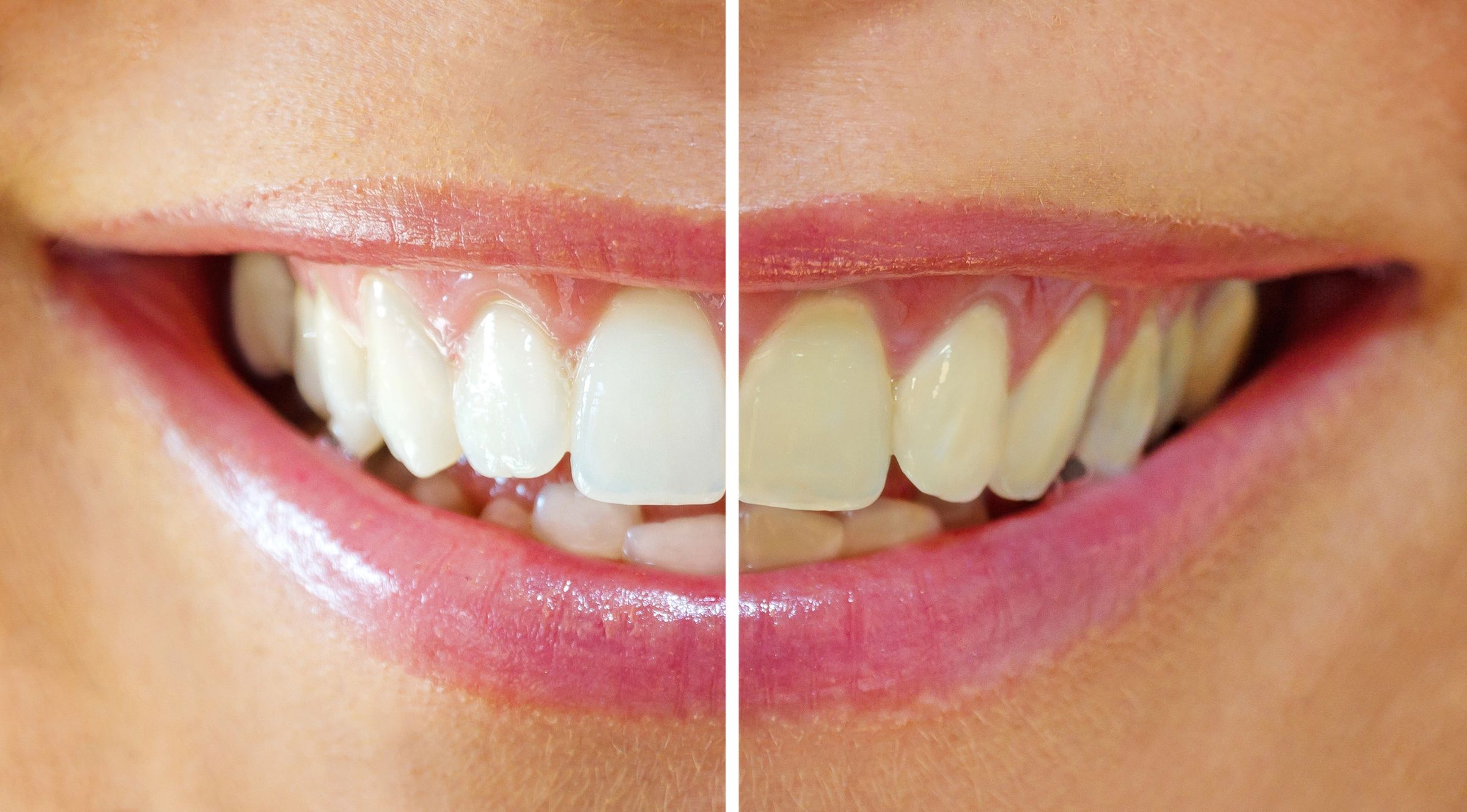Many people want to find ways to make their smiles brighter and are turning to various teeth whitening methods. There are now so many different options available from state-of-the-art in-office treatments to at-home treatments using teeth whitening kits.
How do you know which option to choose? What are the benefits of each method and are they effective? These questions will be answered in today’s guide to teeth whitening.
How Do I Get My Teeth White?
There are three methods that are generally used to whiten teeth today. These are:
- Laser treatments
- Using gels, strips, and trays
- Teeth whitening kinds of toothpaste and mouthwashes
Which method is the best depends on you and your needs, your budget, and how fast you want to see results. You must consider how permanent you want the whitening to be and how much discomfort due to increased sensitivity you are willing to endure.
These methods of teeth whitening only work on natural teeth. Tooth replacements like dentures, fillings, veneers, and dental implants will not be affected by the tooth whitening process.
Why Do Teeth Get Discolored?
Naturally, teeth aren’t a bright shade of white. The enamel is an outer coating that covers the teeth and is a bluish-white and translucent. Inside is a substance called dentin that is a natural yellow color and this can show through the enamel.
Your enamel will grow thinner as you age so it’s natural for your teeth to look more yellow or darker as time goes on. But there are also a number of foods and drinks that are strongly colored and acidic that can accelerate discoloration. These are:
- Berries
- Acidic sauces like tomato sauce and curry
- Coffee
- Tea
- Wine
- Sugary drinks
Your teeth can also be affected by lifestyle choices like smoking or braces.
The best way to avoid staining your teeth is by minimizing the foods and lifestyle choices listed above. You can also eat foods that help prevent tooth stainings such as cheese lettuce celery carrots apples and cauliflower. These foods clean the teeth through friction and can utilize the acid present in the foods that can damage the enamel.
What Are Some In-office Treatments?
It smart to start your teeth whitening journey with a visit to your dentist to discuss potential teeth whitening options. The treatments that they can do in office are going to be the most effective out of all the treatments and lasts the longest. Your dentist will know how to perform them safely in can assist in case of any side effects.
There are generally two different types of in-office treatments: laser teeth whitening and professional bleaching.
Laser Teeth Whitening
While laser teeth whitening might sound dangerous it’s actually a very simple and safe process. The lasers are used to speed up the bleaching effect of a concentrated gel that is applied to the teeth. This means that is the most instant teeth whitening method available. It is also one of the more expensive options.
The dentist will begin by placing a rubber seal around the gums to prevent the bleaching product from bleaching the gums. The bleaching product will likely contain hydrogen peroxide. Then a laser is shined on the teeth than this accelerates the teeth whitening process.
This is the most intense of all the different processes you can do to whiten your teeth but it can give you results after just one visit. It also has the greatest potential for sensitivity after the treatment. However, sensitivity is a temporary side effect. Your dentist may also recommend other steps taken in case of greater sensitivity.
Professional Bleaching
Of all the in-office treatments this is the cheapest one. Your dentist will apply professional-grade tooth whitening gel with custom trays that are shaped to your teeth. This gel is much stronger than the gels available in any in-home treatment. This means that you will see greater results than commercially available kits.
The dentist will begin by taking an impression of your teeth to create the custom tray next to go home and can use these gels at home. The trays are often left overnight which makes it very convenient. Check with the dentist to see what options they might have available if you’re interested in professional bleaching.
What Can I Do At Home To Whiten My Teeth?
There are four basic types of at-home teeth whitening options that you can consider. These include:
- LED whitening
- Bleaching trays
- Teeth whitening strips
- Teeth whitening toothpaste
LED Whitening
These kits can emulate some of the professional level treatments that use LEDs in order to accelerate the bleaching process. It will come to the tray that can sometimes be molded to fit your teeth, a bleaching gel, and an LED light that is used to activate the bleaching gel.
These can give good immediate results but they may quickly fade as the gel used is not as strong as the gels that are used in a professional setting.
Bleaching Trays
You can also get over-the-counter bleaching trays that come with an accelerator fluid that is directly applied to the teeth before the bleaching gel. This treatment can take between 5 to 30 minutes daily, depending on the strength of the gel.
These treatments will often take one or two weeks in order to get the best results. Some products require that you can buy in the bleaching trays with other products like toothpaste or bleaching pens. These can offer good short-term results.
One risk with this kind of teeth whitening treatment is that the kids were not custom fit to your mouth so there’s a greater risk that your gums or cheeks or lips may become bleached or blister because of the bleaching agent. You also may not get the best coverage or uneven coverage with this method.
Teeth Whitening Strips And Pastes
Tooth whitening strips are small plastic strips that are attached to the teeth and they are a less messy and easier way to apply bleach than gels or trays. Generally, most of these brands are required to be placed on the teeth for about 30 minutes but there are some that naturally dissolve after 15 minutes of wear.
These do a good job at brightening your front teeth but they aren’t going to be as effective as the teeth in the back. They are a cost-effective method to be used to produce good results quickly. However, the results will only last for a short period of time before a new application is needed.
Whitening toothpaste is a good option for removing a surface stain. It won’t change the natural yellowing that comes with age but they are the cheapest option that makes it very popular for those who just want a little boost to their smile. They also can be used to maintain results at the more powerful treatment.
How Much Does It Cost To Get Your Teeth Whitened?
The cost largely depends on what method you choose in order to get your teeth whitened. You can spend as little as $5 or less for a tube of whitening toothpaste but don’t expect to see big results.
With teeth whitening, you pay for what you get. And even though professional in-office teeth whitening treatments are going to be much more than the at-home treatments, you will gain the experience and expertise of a trained dentist who can work with you to create a treatment plan that fits your needs and your budget.
Some dentists may even offer financing options to help mitigate the cost of treatment. You may also see if you have any coverage from your dental insurance.
If you are interested in teeth whitening, and you live in Upland, CA, give the Upland Dental Group & Implant Center a call for your consultation at (909) 985-1966. Our expert team will be more than happy to answer your questions.



